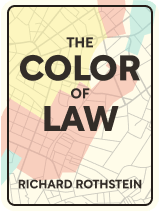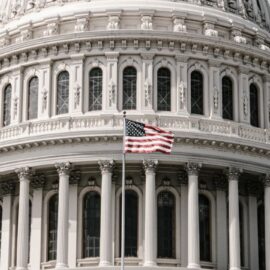

This article is an excerpt from the Shortform book guide to "The Color of Law" by Richard Rothstein. Shortform has the world's best summaries and analyses of books you should be reading.
Like this article? Sign up for a free trial here .
What does suburban flight mean? How did the government encourage white flight to the suburbs?
Suburban flight describes the migration phenomenon of predominantly white families from the urban areas in cities to suburban tracts. The government encouraged white flight by promoting the phenomenon as a mechanism to avoid racial tension and excluding African Americans from the financial support offered to the white families that moved out.
Read on to learn more about the role of the government in the rise of suburban flight.
The Federal Government Enabled Suburban Flight
The shortcoming of economic zoning—at least as far as segregationists were concerned—was that it was race-blind: Although many African American families were too poor to own single-family homes, not all were, and so if a Black family could afford to buy a single-family home, they could live in an economically zoned area.
Two policy objectives pursued by the federal government in the middle of the 20th century furthered the cause of segregation. Through agencies like the Home Owners Loan Corporation (HOLC) and the Federal Housing Administration (FHA), the government (1) encouraged and financed the movement of white families out of urban centers and into suburban tracts and (2) withheld that support from African Americans, thereby consigning them to those urban centers.
The Rise of White Flight
The origins of the government’s discriminatory interventions in the private housing market can be found in the early twentieth century. Elected officials, wary of the communist takeover in Russia, theorized that the wider ownership of property would act as a bulwark against communism (because the more people who owned property, the more people who would be committed to the capitalist system that allowed for private property).
The type of property officials favored was homes. In 1917, the Department of Labor inaugurated the “Own-Your-Own-Home” campaign, which, through mass marketing, pressured renters to purchase homes as a “patriotic duty.”
This initiative was supplemented by the Better Homes in American organization. Nominally private, but headed by Secretary of Commerce Herbert Hoover and guided by the Department of Labor, this organization praised homeownership as a mechanism for avoiding racial tension. That is, white families could avoid conflict with Black families by moving from integrated urban neighborhoods to single-family homes in suburbs. That’s how suburban flight, or white flight, was perpetuated.
A seminal moment in the federal government’s promotion of homeownership was the President’s Conference on Home Building and Home Ownership. Convened by Hoover in the middle of the depression, the conference featured numerous racial dog whistles. For example, one member of the committee on financing homeownership recommended deed restrictions to prohibit “incompatible ownership occupancy”—a euphemism for African American buyers. Other committee members were architects of segregated neighborhoods in Atlanta and St. Louis.

———End of Preview———
Like what you just read? Read the rest of the world's best book summary and analysis of Richard Rothstein's "The Color of Law" at Shortform .
Here's what you'll find in our full The Color of Law summary :
- How racial residential segregation is the result of explicit government policy
- The three reasons why racial segregation is so difficult to reverse
- The steps that could lead to a more integrated and equitable society






